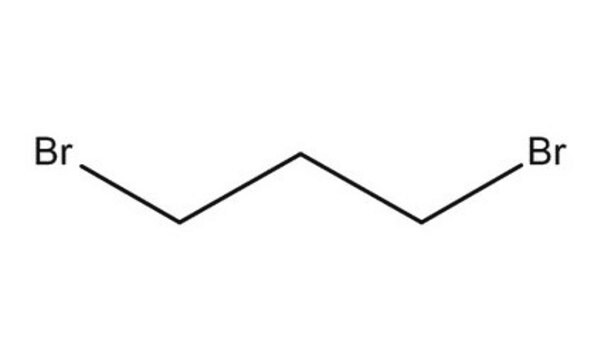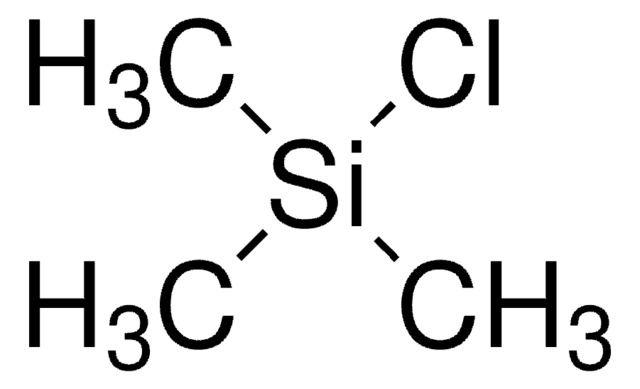03505
1,2-Dibromoethane
purum, ≥98.0% (GC)
Synonyme(s) :
EDB, Ethylene dibromide
About This Item
Produits recommandés
Densité de vapeur
~6.5 (vs air)
Niveau de qualité
Pression de vapeur
11.7 mmHg ( 25 °C)
Qualité
purum
Pureté
≥98.0% (GC)
Forme
liquid
Indice de réfraction
n20/D 1.539 (lit.)
n20/D 1.539
Point d'ébullition
131-132 °C (lit.)
Pf
8-11 °C (lit.)
Densité
2.18 g/mL at 25 °C (lit.)
Chaîne SMILES
BrCCBr
InChI
1S/C2H4Br2/c3-1-2-4/h1-2H2
Clé InChI
PAAZPARNPHGIKF-UHFFFAOYSA-N
Vous recherchez des produits similaires ? Visite Guide de comparaison des produits
Catégories apparentées
Description générale
Application
- To generate vinyl bromide in situ, which can undergo a palladium-catalyzed cross-coupling reaction with aryl boronic acids to form functionalized styrene derivatives.
- As a brominating agent of tertiary carbanions in sterically hindered molecules.
- As a building block to synthesize 2-arylsulfonyl hydrazones, (±)-horsfiline and 7-oxo-2, 3-dihydro-7H-pyrido [1,2,3-de] [1,4] benzoxazine-6-carboxylic acids.
Mention d'avertissement
Danger
Mentions de danger
Classification des risques
Acute Tox. 3 Dermal - Acute Tox. 3 Inhalation - Acute Tox. 3 Oral - Aquatic Chronic 2 - Carc. 1B - Eye Irrit. 2 - Skin Irrit. 2 - STOT SE 3
Organes cibles
Respiratory system
Code de la classe de stockage
6.1A - Combustible acute toxic Cat. 1 and 2 / very toxic hazardous materials
Classe de danger pour l'eau (WGK)
WGK 3
Point d'éclair (°F)
Not applicable
Point d'éclair (°C)
Not applicable
Équipement de protection individuelle
Eyeshields, Faceshields, Gloves, type ABEK (EN14387) respirator filter
Faites votre choix parmi les versions les plus récentes :
Déjà en possession de ce produit ?
Retrouvez la documentation relative aux produits que vous avez récemment achetés dans la Bibliothèque de documents.
Les clients ont également consulté
Notre équipe de scientifiques dispose d'une expérience dans tous les secteurs de la recherche, notamment en sciences de la vie, science des matériaux, synthèse chimique, chromatographie, analyse et dans de nombreux autres domaines..
Contacter notre Service technique














